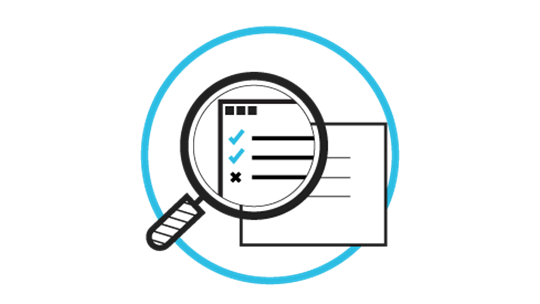Website migration: How to get it right (checklist)
As your website grows in size and complexity, there may come a time where a website migration becomes necessary. When this happens, following a step-by-step approach to migrating your site makes the process smoother and helps you avoid a negative SEO impact.
Read on to learn:
- What a website migration is
- When you should migrate a site
- The step-by-step checklist for migrating a site
- How tools can help you ensure a smooth site migration

What is a website migration?
Website migration isn’t always as drastic as moving your site to a brand-new domain.
In the world of SEO, website migration refers to any sitewide change that’s major enough to have an impact on the site’s indexability and visibility to search engines. This includes activities like changing the internal page structure or doing a visual redesign.
If implemented without a proper plan in place, a site migration can seriously damage your hard-earned SEO standing. That’s why you should treat any migration as a major project with multiple stakeholders.
When is a site migration worth it?
You should consider launching an official site migration in the following cases.
Top-level site changes
This covers the most drastic types of sitewide changes. The clearest example of this is moving a site to an entirely new domain, which often involves a switch in hosting providers and server locations.
A switch from using subdirectories (e.g. “site.com/category”) to subdomains (e.g. “category.site.com”) across the entire site is also considered a top-level change. This will usually change the URL path for most of your pages, meaning subdirectory links may become obsolete and broken.
Another kind of top-level site change could involve something seemingly less disruptive, like adapting your pages to the Accelerated Mobile Pages (AMP) framework. Using this coding framework allows Google to pre-load your pages to serve them almost instantly to mobile visitors. But because AMP requires extensive tweaks to your on-page code, it can influence how search engines access and crawl your pages.
Site restructure
Another website migration case involves making significant changes to the underlying structure of the site.
An example of a site restructure is reaching new international audiences by translating your site’s content to French and placing it in newly created language subdomains (e.g. “fr.site.com”) or subdirectories (e.g. “site.com/fr/”).
This could also involve consolidating several existing domains into one or changing the URL structure. For instance, changing your permalinks from using automatic post IDs (e.g. “site.com/post1”) to descriptive slugs (e.g. “site.com/post-about-topic”).
Such changes will require the old URLs to be permanently pointed to the new ones using 301 redirects. Without these redirects, you’ll risk losing their SEO rank because search engines will consider these pages to be broken, as they will no longer work once the new site structure is live.
Site redesign
Even changes that leave your overall site and URL structure intact can fall under the website migration definition. Rebranding your site or changing its design fit into this category.
That’s because crucial on-page SEO elements may get lost in the redesign – even by accident. Switching to a new font may accidentally strip the heading tags, or someone doing a bulk replacement of on-page images may forget to add alt tags.
In some cases, UX upgrades that make the site easier to use can actually have a negative impact on its SEO. A new, seemingly user-friendly interactive element might be coded in a way that renders its content invisible to Google.
In short, every change that risks a sitewide loss of SEO is a website migration issue.
Website migration checklist
What’s the best way to approach sitewide changes to avoid forfeiting your hard-earned SEO rankings?
First, you should accept that it’s almost impossible to perform a website migration without it having at least some SEO impact. Your job is not to eliminate every short-term SEO fluctuation but to shorten and minimize their extent in the longer-term.
Second, be proactive in predicting the outcomes of a site migration and put a plan in place to handle them. Referring to a comprehensive website migration checklist makes this task a lot easier.

Before the website migration: The planning stage
During this stage, you’ll be setting your goals and getting buy-in from your organization.
1. Define a clear project scope and migration objectives
To begin with, you want to establish the primary goals of the site migration and its scope. What is it supposed to accomplish? Will the change impact all pages of your site or just a few individual subsections?
Website migration often has goals that are unrelated to SEO, like a redesign that is purely a branding decision. But in cases where SEO benefits are anticipated – like switching to descriptive URLs to help Google better understand your content – you’ll want to be able to measure the outcome.
For instance, you could start with a hypothesis that moving your blog from the “blog.site.com” subdomain to the “site.com/blog/” subdirectory will result in 10% more organic traffic. This gives you a concrete metric to track in order to evaluate whether the migration was a success.
2. Involve all internal stakeholders as early as possible
Website migration usually involves the entire digital marketing team. Every department is likely to want a say in how it’s executed, including:
- SEO specialists
- Marketing automation team
- Content writers and marketers
- Data analysts
- Web developers
- DevOps
- UX specialists
- Designers
It’s critical to get key stakeholders from these departments involved early in the process. This will help you get their buy in on the upcoming changes. Second, it gives everyone the opportunity to highlight any potential implementation challenges ahead of time. Raising awareness early on will help migrations go as smoothly as possible – so try not to spring any last-minute surprises on them.
3. Create an overview of metrics and benchmarks
Before you begin, you should have an overview of the current site performance so that you can evaluate what impact the migration has.
When it comes to SEO, you’ll want to take note of the following metrics:
- Organic traffic: How many visitors enter your site via search engines? What’s the distribution of this traffic across the different pages?
- Organic rank: Which pages rank for your target keywords and in which SERP position?
- Pages crawled: The number of pages search engines crawl when going through your site.
- Indexable URLs: How many URLs get indexed?
- Site structure: How many clicks does it take to reach the most remote page on the site? Are there any orphan pages that have no internal links pointing to them?
- Site speed: How quickly do pages load and become interactive?
These metrics will serve as a comparison benchmark for your post-migration site. Big deviations from the above metrics will signal a potential issue to be resolved.
4. Set a migration deadline
As extensive as a site migration can be, you should aim to have it executed as quickly as possible. Speed will help minimize the disruptive effects of a migration.
While a migration is in progress, you should avoid publishing new content or launching new pages. So, a good first step is rolling out a content freeze just before and during the migration.
Second, almost any major site change will result in a period of downtime where the site is inaccessible or doesn’t function properly. Because of this, it’s best to schedule migrations during off-hours or during a seasonal period of low traffic. This way, you’ll limit the number of site visitors who encounter a disruption to their site experience.
Website migration: The development stage
As you’re working to push the migrated site live, you’ll want to keep tabs on the following.

5. Create a content inventory
Just before the launch, you should take full stock of your existing content, including pages, documents, media files, and other content assets. Ideally, create backup copies of all of them.
Having a content inventory in place lets you quickly spot if any content gets lost during the migration process. Knowing which documents became inaccessible after the change will help you rectify the issue quickly, preferably before any major damage is done. If you’ve made backups, uploading the missing documents to the new site becomes a more straightforward task.
6. Have an overview of your website’s URLs and backlink profile
As mentioned, site migrations often change the entire structure of your site.
This means that external sources linking to your pages may suddenly end up pointing to a URL that no longer exists. Visitors that follow links from these external sites may end up seeing 404 errors. In turn, this will make you lose the positive SEO signals from those backlinks.
To avoid this, make sure you have a complete overview of your site’s backlink profile. That way, you can redirect incoming links to the new, functioning versions of your pages. Even if your migration ends up deleting some pages entirely, it’s still better to actively redirect external links to an alternative existing page than having them point to a broken one.
7. Update canonical links
During a migration, you may temporarily (at least) end up with multiple versions of the same page. Duplicate content makes it more difficult for Google and other search engines to decide which of these pages to rank. The result can be the wrong, outdated page showing up on Google instead of the one you intended.
To avoid this, make sure canonical links are in place where needed. A canonical tag signals to Google which of your pages with similar content you consider to be the main version. Google will usually honor this tag and prioritize the canonical URL when making a ranking decision.
Ensure you flag your new, post-migration pages as canonical to avoid losing your SEO standing.
8. Do a web accessibility check
Redesigning a site can affect how accessible it is to users with disabilities. For example, a new custom font or color combination may look cutting edge, but it can tank your digital inclusiveness reputation by making certain content inaccessible to some users.
As such, whenever you make major design or UX changes, it’s a good idea to check your website’s accessibility. This is especially true if you’re expanding into a new market and need to be compliant with its accessibility regulations.
After the website migration: The monitoring and reporting stage
Once the migration is complete, you will move on to assessing its short-term and long-term impact.

9. Update your robots.txt file
The robots.txt file tells crawlers which parts of your site you want them to access. If this is not properly configured, you risk rendering entire sections of your site invisible to search engines – and thereby to potential visitors!
Immediately after migrating your site, you should revisit your robots.txt to make sure it’s not blocking any critical pages or allowing access to sections that should stay hidden.
10. Crawl your website to identify errors
Once the new version of the site is live, it’s time to perform a full site crawl. This will quickly identify whether you’re seeing an increase in the number of broken links or error response codes.
It can also help you spot new pages with missing meta tags, duplicate URLs, pages that have suddenly become orphaned or inaccessible, and other SEO errors. Once the crawl is complete, you’ll know which issues you must resolve to retain your SEO standing.
11. Check your analytics tags
Web analytics tools rely on HTML tags to function properly. Without these tags, your analytics tool won’t be able to track and report on page visits.
Post-migration, make sure analytics tags are present on all the pages you intend to monitor.
12. Test and submit your XML sitemap
Your XML sitemap is a top-level index of all available URLs on your site. It helps search engines like Google discover and scan your pages, so that it can index them.
If the URL structure of your site has changed significantly during a migration, you’ll want to test whether your sitemap still reflects the real picture. Test your sitemap to make sure that it lists your pages correctly and that no key pages are missing from the overview.
After that, submit your new sitemap to the Google Search Console or Bing Webmaster Tools so that they know which URLs to crawl.
13. Report on your benchmark metrics
The final step in any site migration is to return to the metrics you collected during the planning stage (see step three). You can now analyze the web analytics data for the new site and see how it compares.
What do the new numbers for these metrics look like? Are they in line with your hypotheses and expectations? If not, you’ll be able to identify what went wrong with relative ease by referring to your benchmarks. Perhaps your original assumptions still hold up, but there’s a technical issue that needs to be fixed.
Going forward, you’ll be able to track the positive effects of this change on a continuous basis.
Siteimprove: An all-in-one tool to make website migration a smooth process
It’s clear that any website migration is a major project with multiple stakeholders, many moving parts, and plenty of opportunities for things to go wrong.
For it to be a success, you must keep a close eye on your key metrics and site elements that impact your SEO. Yet doing this manually isn’t always feasible. Especially with larger or multiple websites, there’s simply be too much to keep track of by hand.
In more complex website migration cases, it also helps to have an automated tool to audit your site and spot issues quickly. Tools designed with website migration requirements in mind can help you do the necessary checks before, during, and after the migration to ensure a smooth process from start to finish.
Siteimprove offers a suite of integrated modules designed to make your website migration run efficiently. These include:
- SEO monitoring tools
- Content inventory
- Brand Compliance and Website quality checks
- Performance metrics
- Web accessibility checks
- Web analytics
Having access to these reporting tools and automated checks is a great way to ensure an error-free, successful site migration.
